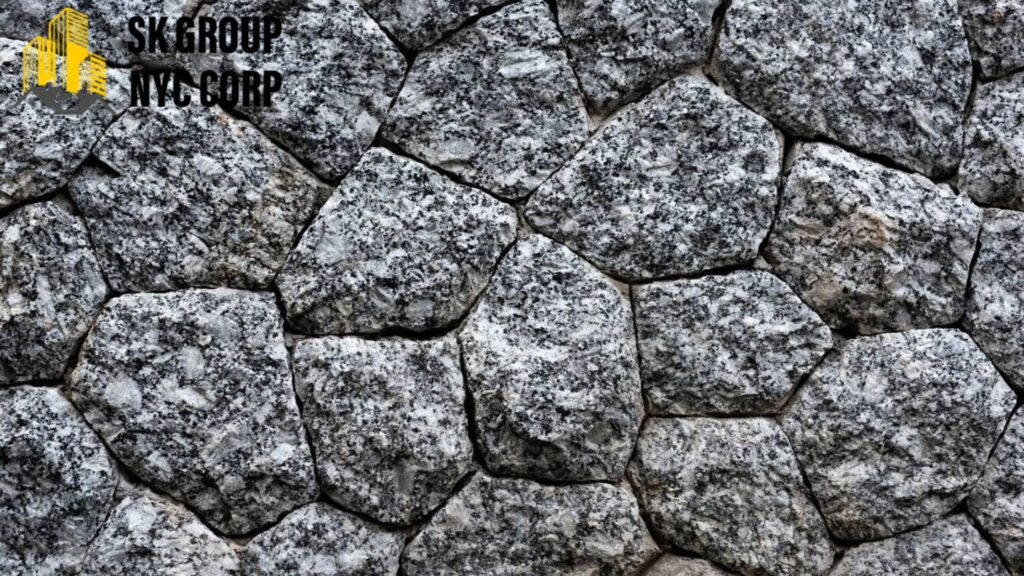Stone masonry near me is more than just a building material it’s a piece of timeless beauty and strength. Whether it’s your home’s exterior, garden wall, or entryway, natural stone adds elegance that lasts for decades. But to keep it looking its best, regular cleaning and care are essential.
At SK Group NYC Corp, we know how valuable your stone structures are. Let’s walk you through some easy, effective ways to maintain and clean your stone masonry so it stays beautiful and strong for years.
Table of Contents
Understanding Stone Masonry Near Me
Before you start cleaning, it’s important to know what kind of stone you have. Common types include granite, limestone, marble, and sandstone. Each stone has its own texture and reaction to cleaning products.
Knowing your stone type helps you avoid harsh chemicals and choose the safest cleaning method. If you’re unsure, our local stone masonry experts can inspect and guide you on the best care plan.
Simple Maintenance Tips for Stone Masonry
1. Inspect Regularly
Walk around your stone walls or pathways every few months. Look for cracks, chips, or white powdery spots (efflorescence) these signs show moisture problems or minor wear that needs fixing.
2. Keep It Dry
Water is a stone’s biggest enemy. Make sure there’s proper drainage near your masonry, and fix any leaks fast. This prevents long-term damage and helps the stone maintain its natural color.
3. Seal the Stone
A good-quality sealer protects your stone from stains, moisture, and harsh weather. Reapply the sealer every couple of years or as the product recommends. This small step adds years to your masonry’s life.
4. Clean Spills Quickly
If you drop vinegar, wine, or citrus juice, wipe it right away. These acidic liquids can etch and discolor stone surfaces if left for long. Use mild soap and a soft cloth for safe cleanup.
Cleaning Stone Masonry Near Me
1. Dust and Sweep Often
For interior stone, simply dust with a soft cloth once a week. For outdoor masonry, use a broom or blower to clear away leaves and dirt.
2. Use Safe Cleaners
Avoid strong chemicals. Always choose pH-neutral stone cleaners. Acidic or alkaline products can dull or scratch the surface. Mix the cleaner with water as directed.
3. Scrub Gently
Use a soft-bristle brush or sponge to remove dirt. Never use wire brushes. For stubborn stains, let the cleaner sit for a few minutes before scrubbing lightly.
4. Rinse and Dry
After cleaning, rinse with clean water and dry with a soft towel. This prevents streaks and helps the stone shine naturally.
Fixing Common Stone Masonry Problems
Efflorescence (White Powder)
This is salt left behind after water evaporates. Brush it off with a dry brush, then wipe with a damp cloth. If it keeps returning, your masonry might need better drainage or sealing.
Mold and Mildew
Use a mix of water and mild bleach. Apply gently with a brush, rinse well, and let it dry. Make sure the area has good airflow.
Stubborn Stains
Mix baking soda and water into a paste. Spread it on the stain, cover with plastic wrap, and leave it for a day. Rinse afterward.
Why Professional Stone Masonry Near Me Matters
Sometimes, cleaning isn’t enough especially when there’s cracking, discoloration, or deep stains. That’s when calling a professional makes a difference.
At SK Group NYC Corp, we offer expert stone masonry repair, cleaning, and restoration across NYC. Our team knows how to handle all stone types safely, ensuring your masonry looks new again without damage.
We use top-quality sealers, power washing tools, and eco-friendly cleaners to make your property shine. Whether it’s a small repair or a full restoration, we’ve got your stone covered.
Why Choose SK Group NYC Corp?
- ✅ Experienced local masonry experts near you
- ✅ Eco-friendly cleaning and sealing solutions
- ✅ Durable, long-lasting results
- ✅ Affordable rates and free inspections
Your stone deserves professional care and we’re just one call away.
Final Thoughts
Maintaining stone masonry near me doesn’t have to be hard. With regular cleaning, sealing, and quick repairs, you can keep your stone looking as good as the day it was installed.
If you notice damage or want professional help, SK Group NYC Corp is here for you. We’re proud to help NYC homeowners protect their beautiful stonework for generations.
📞 Call us today for expert stone masonry cleaning, sealing, and repair near you!
Have Questions? Call Us Now!
+1 (718) 507-7000
We’re here to help quick answers, friendly service, anytime you need!
Contact SK Group NYC
🌐 Website: www.skgroupnyccorp.com
📍 Serving: Manhattan, Brooklyn, Queens, The Bronx, and Staten Island
📍 Address: 87-88 172nd St, Jamaica, New York, NY, United States, New York

